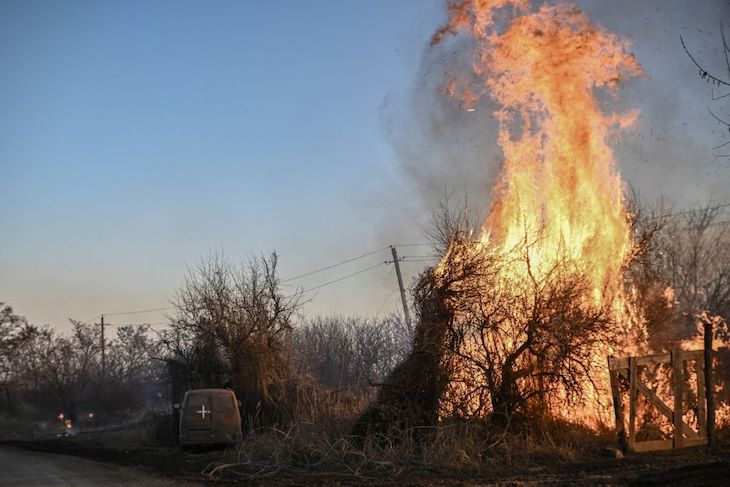There is something oddly Christmassy about the scene: a night-time city bathed, festooned in twinkling white lights, the smoke around them almost luminous. A shower of brilliant sparks falls calmly from the air, lighting up the dark sky – the town below seeming to celebrate something, over and over, with a spectacular firework display: flares, starbursts, dry-ice and Roman Candles.
But the visual beauty is a sick joke, the town is Bakhmut at the end of a nine-month siege, and the illuminations appear to be an attack by Russian forces with white phosphorus – so the Ukrainian government claim – one of the most lethal incendiary chemicals in use today.
WP – white phosphorus, also known colloquially as ‘Willie Pete’ – is (as many will remember from chemistry classes at school) a wax-like substance with an odd garlicky smell, named from the Greek word ‘phosphoros’, the Morning Star. An oxidiser, it reacts with the air to burst into flame, producing large quantities of smoke and reaching staggering temperatures of up to 800 degrees centigrade.

Get Britain's best politics newsletters
Register to get The Spectator's insight and opinion straight to your inbox. You can then read two free articles each week.
Already a subscriber? Log in






Comments
Join the debate for just £1 a month
Be part of the conversation with other Spectator readers by getting your first three months for £3.
UNLOCK ACCESS Just £1 a monthAlready a subscriber? Log in